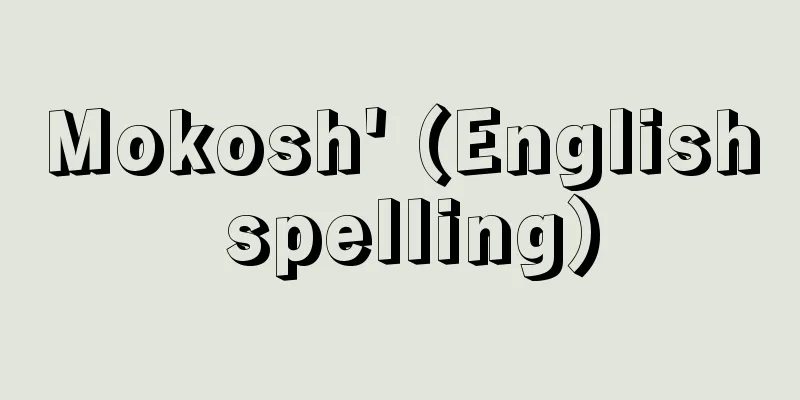Tomioka Tessai

|
A great modern Japanese painter. Born on December 19, 7th year of the Tenpo era, as the second son of Juichiya Denbei (Tomioka Korenobu), a Kyoto priest's robe merchant. His name was originally Yusuke, then Dosetsu, and later Hyakuren. His pen name was Muken. His pen names were originally Yuken, then Tessai, and also Tetsugai and Tetsudojin. He learned to read and write from Yamamoto Baien, and at the age of 15, he studied Japanese classics from Okuni Takamasa, a disciple of Hirata Atsutane, and Confucianism from Iwagaki Gesshu. At the age of 20, he lived as a student servant of Otagaki Rengetsu at Shinshoji Temple, where he studied Yangmingism under Kasuga Senan and attended lectures by Umeda Unpin. He also became acquainted with Raimikisaburo, Itakura Kaido, Fujimoto Tesseki, and Yamanaka Shinteno, and spent his youth devoted to the idea of loyalty to the emperor during the turmoil of the late Edo period, and was devoted to national affairs. After the Meiji Restoration, he traveled around the country to learn about history, geography and customs, and served as the chief priest of Isonokami Shrine in Nara and Otori Shrine in Izumi, devoting himself to the revival of Shinto. In 1881 (Meiji 14), he returned to Kyoto to dedicate himself to painting, and his reputation as an artist gradually grew. At the age of 19, he was taught the basics of Nanga painting by Osumi Nanko and Kubota Setsutaka, and during a trip to Nagasaki in 1861, he consulted Kinoshita Itsuun and Tetsuo about painting techniques, but he was largely self-taught. He developed his own style of painting based on his study of various schools of Nanga, Ming and Qing painting, Yamato-e, and other schools, as well as sketching, but what stands out in his style are his free-spirited ink paintings that are filled with a fresh sense of color and energy, and he left behind many masterpieces in his later years. In the thriving Meiji art world, he became a judge for various exhibitions and expositions, but he only exhibited his work at exhibitions held by the Nanga Association and the Goso Jounsha Exhibition, and he maintained his position as an independent scholar while living a self-sufficient life. He was known for his erudition and wide knowledge, and for collecting rare calligraphy, following the literati philosophy of "read ten thousand volumes of books and travel ten thousand miles." He was appointed an Imperial Household Artist in 1917 (Taisho 6), and a member of the Imperial Academy of Fine Arts in 1919. He passed away in Kyoto on December 31, 1924. His representative works include "The Peak of Mt. Fujin," "Abe no Nakamaro and the Moonlit View of Mt. Meishu," and "Manners of the Old Emishi," and he also left behind excellent small pieces such as "Bold Works in the Former Fortress." The Tessai Museum is located in Kiyoshikojin in Takarazuka City. [Hoshino Suzu] "Tomioka Tessai" by Kodaka Netaro (1962, Heibonsha)" ▽ "Tomioka Tessai" by Kobayashi Hideo and others (1965, Chikuma Shobo)" ▽ "Tomioka Tessai" edited by Aoki Katsuzo (1971, Shibundo)" ▽ "Complete Collection of Contemporary Japanese Art 1: Tomioka Tessai" by Kodaka Netaro (1973, Shueisha) National Diet Library Tessai Tomioka Source: Shogakukan Encyclopedia Nipponica About Encyclopedia Nipponica Information | Legend |
|
近代の巨人的日本画家。天保(てんぽう)7年12月19日、京都の法衣商十一屋伝兵衛(富岡維叙(これのぶ))の次男として生まれる。名は初め猷輔のち道節、さらに百練と改める。字(あざな)は無倦(むけん)。号は初め裕軒(ゆうけん)のちに鉄斎、ほかに鉄崖(てつがい)、鉄道人がある。山本園(やまもとばいえん)に読み書きを習い、15歳のころ平田篤胤(ひらたあつたね)の門人大国隆正(おおくにたかまさ)に国学を、岩垣月洲(いわがきげっしゅう)に儒学を学ぶ。20歳のころには心性寺(しんしょうじ)に太田垣蓮月(おおたがきれんげつ)の学僕として住み込み、その薫陶を受けて春日潜庵(かすがせんあん)に陽明学を学び、梅田雲浜(うめだうんぴん)の講義を聴く。また頼三樹三郎(らいみきさぶろう)、板倉槐堂(いたくらかいどう)、藤本鉄石(ふじもとてっせき)、山中信天翁(やまなかしんてんおう)らと交際するなど、幕末動乱のなかで勤皇思想に傾倒し、国事に奔走する青年期を過ごした。維新後は、歴史、地誌、風俗を訪ねて各地を旅行したり、奈良石上神宮(いそのかみじんぐう)、和泉(いずみ)の大鳥神社の宮司となって神道復興に尽くすが、1881年(明治14)京都に帰り画業に専念、徐々に画名も高まっていった。 画(え)は19歳のころ大角南耕、窪田雪鷹に南画の手ほどきを受け、長崎旅行(1861)の際、木下逸雲(きのしたいつうん)や鉄翁に画法を問うたりもしたが、ほとんど独学である。南画や明清画(みんしんが)、大和絵(やまとえ)などの諸派の研究、また写生をその基礎に独自の画風をつくりあげたが、特色とするところは、生新な色彩感覚と気迫に満ちた自由放胆な水墨画風のものにあり、多く晩年に傑作を残している。活発になった明治画壇で、各種の展覧会や博覧会の審査員となるが、自身は南画協会、後素如雲社展(こうそじょうんしゃてん)以外は出品せず、自適の生活のうちに在野の学者としての態度を貫いた。「万巻の書を読み、万里の道を行く」文人哲学を指標に、博学多識、稀覯(きこう)の書の収集家としても聞こえた。1917年(大正6)に帝室技芸員、1919年に帝国美術院会員に任ぜられている。大正13年12月31日京都に没。代表作に『不尽山全頂図(ふじさんぜんちょうず)』『安倍仲麿明州望月図(あべのなかまろめいしゅうぼうげつず)』『旧蝦夷風俗図(きゅうえぞふうぞくず)』などがあり、『小黠大胆図(しょうかつだいたんず)』のような小品にも優れたものを残した。宝塚(たからづか)市の清荒神(きよしこうじん)内に鉄斎美術館がある。 [星野 鈴] 『小高根太郎著『富岡鉄斎』(1962・平凡社)』▽『小林秀雄他著『富岡鉄斎』(1965・筑摩書房)』▽『青木勝三編『富岡鉄斎』(1971・至文堂)』▽『小高根太郎著『現代日本美術全集1 富岡鉄斎』(1973・集英社)』 国立国会図書館所蔵"> 富岡鉄斎 出典 小学館 日本大百科全書(ニッポニカ)日本大百科全書(ニッポニカ)について 情報 | 凡例 |
Recommend
Austin, John
Born: March 3, 1790, Cretin Mill, Suffolk [Died] D...
Saponification (English spelling)
When an ester is heated with an alkaline solution,...
Dolet, E. (English spelling) DoletE
...But printers, who were also carriers of new id...
New moon - Shingetsu
〘Noun〙① = saku (new moon)④② New moon (saku) ④ The ...
From the Abyss - De Profundis
A prison memoir by the British author O. Wilde. Th...
Kenjun
Year of death: 13 July 1623 (9 August 1623) Year o...
Minamoto no Shitagou
A poet and Chinese scholar from the mid-Heian per...
Armorique
…Axes with a rim height of 1-2 mm are called low-...
Oichi no Kata - Oichi no Kata
1547-1583 A woman from the Sengoku to Oda-Toyotom...
spontaneous pneumothorax
...Pneumothorax occurs secondary to these underly...
Self-harm
〘 noun 〙 A wound inflicted by oneself. Especially,...
Distance point - distance point
…In the early 16th century, Dürer introduced pers...
Phosphorescence (English spelling)
A type of luminescence. When a substance is excite...
Regulatory signs - Regulatory signs
A type of road sign. It indicates prohibitions, re...
Oxford Down [seed] - Oxford Down
...Slightly larger and used for hybrid production...




![Kamakura [city] - Kamakura](/upload/images/67cb3e117632a.webp)




